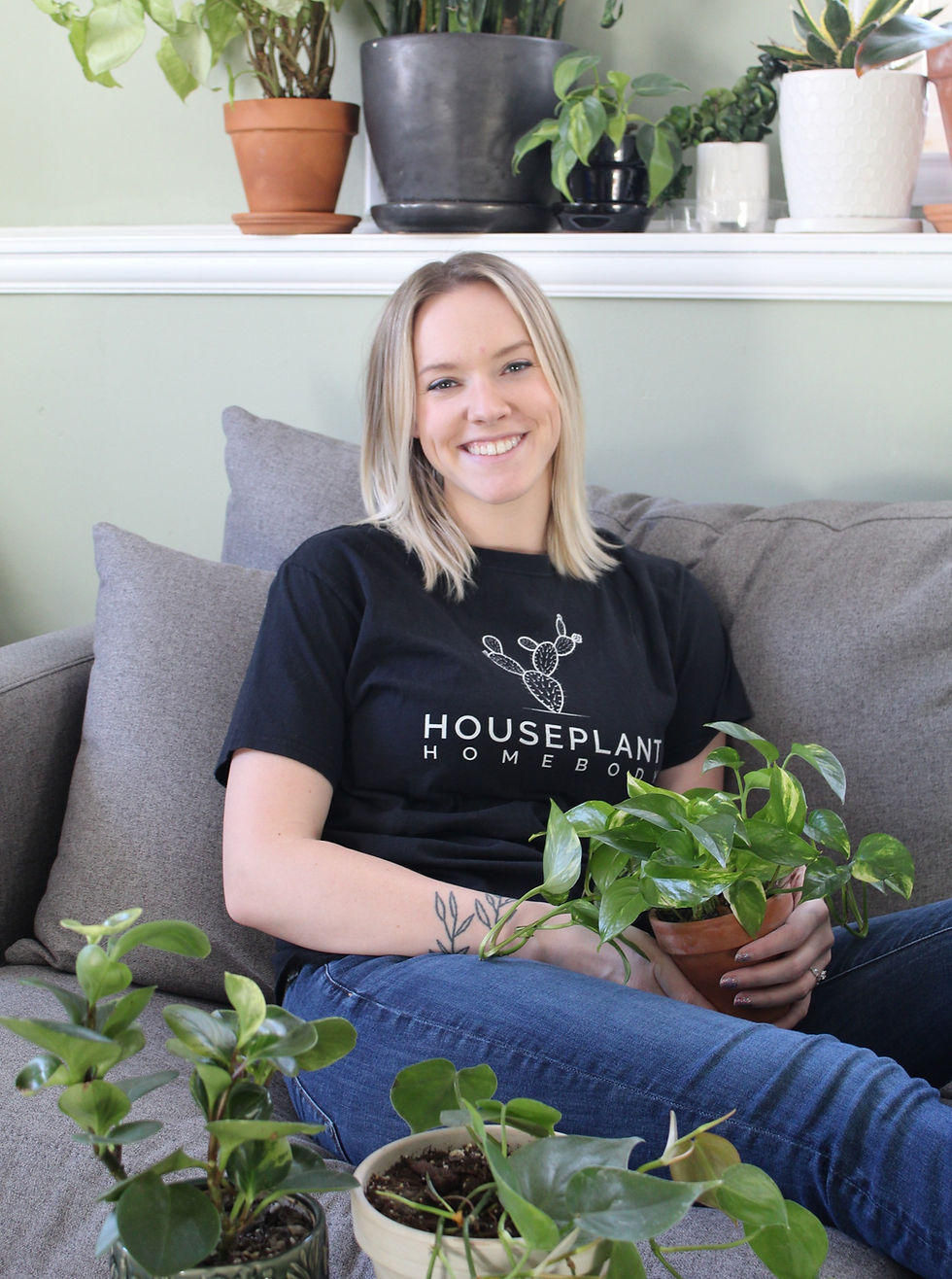Norfolk Pine- Plant Bio: Podcast Ep#48
- Owner: Holly Dz

- Dec 7, 2021
- 3 min read
Updated: Dec 19, 2021
This staple holiday houseplant actually makes the perfect plant year round! Their easy nature creates the ideal long-term term houseplant for years to come.
Botanical Name: Araucaria heterophylla
Common Name: Norfolk Pine, Norfolk Island Pine, House Pine, Star Pine
Sun Requirements
The Norfolk Pine does it's best in bright light. It can even handle some direct sunlight. The growth will be more compact, and not as leggy, if you can provide high light. That being said, it does well in almost any sunlight location in your home. I've seen these thrive in low, medium, and bright light. My pine has been sitting in a north window and is growing amazingly.
Water Requirement
Medium moisture is what this plant needs. If it dries out to much you may notice some crunchy brown needles.
Another great attribute of the Norfolk Pine is that they can adapt to dry environments. This means extra humidity is not necessary. I've never given mine extra humidity and it hasn't complained!
Fertilizer
As I always say, there are LOTS of ways to fertilize plants. Unless you are extremely over-fertilizing your plant, there isn't necessarily a wrong way to do this. I currently use Fox Farm's Grow Big Liquid Fertilizer and I fertilize every 2 weeks when I water my plants, starting around the end of February through October. I honestly probably only fertilize once or twice in winter because the plant isn't as active! I use about 1/2 to 3/4 the recommended amount of fertilizer because I would rather under-fertilize than over-fertilize my plants. Based on the below info from Fox Farm it looks like I could increase my fertilizing a bit if needed!
The Complete Houseplant Survival Manual: "From March to September, feed monthly with a balanced fertilizer. Spray twice yearly with a micronutrient spray."
North Carolina State Extension: "Consider weekly or biweekly applications of dilute liquid fertilizer from spring through fall"
As you can see, there are MANY ways to fertilize and it is completely up to you! There are tons of products out there you can try but an overall rule of thumb for houseplants is that it is best to under-fertilize, rather than over-fertilize. Always use the recommended amount, or less, when applying your fertilizer to houseplants.
Propagation
There isn't an easy way to do this like most other houseplants. Propagation is best through seeds with this plant. I would never have the patience for that so I would rather buy a small Norfolk Pine to save time. Up to you though!

Other Facts
These are considered a part of the Araucariaceae Family
This family contains plants that date back to the Jurassic Period.
The Norfolk Pine is not actually a Pine tree! The difference is the seed cones and foliage type. (This article from Pacific Horticulture has an AMAZING article about this plant family!)
These are native to Norfolk Island which is an Island East of Australia
In nature, these plants can grow upwards of 200ft tall. In your home they won't grow as fast but can grow upwards of 6ft. I saw a few growing at the Mitchell Domes here in Milwaukee, WI! The tallest one was close to 20ft tall (see image)!
These are toxic to pets and humans. Check out Podcast Ep#31 for more info or the corresponding blog post!
#norfolkpine #norfolkislandpine #lowmaintenance #araucariaceaefamily #mediummoisture #crazyplantlady #ihaveathingwithplants #plantcommunity #urbanjungle #funfacts #podcast #houseplanthomebody #blog #helloplantlady #plantparenthood #fortheloveofplants #plantaddict #plantgang #plantsarefriends #thatplantlife #houseplantlove #tellyourplantfriend #houseplantblog #houseplantpodcast #plantssparkjoy #plantsmakepeoplehappy

WANT TO LISTEN?
Go to Apple Podcasts, Amazon, Spotify, Stitcher, Google Podcasts, and more! Search for Houseplant Homebody to hear this episode and MANY more! You can also listen directly on my website under the Podcast page!
DON'T FORGET TO FOLLOW!
Stay connected on Instagram, Facebook, and Pinterest @houseplanthomebodyllc.
SAVE, COMMENT, LIKE, FOLLOW, SUBSCRIBE, and SHARE.
All your engagement on my podcasts, blogs, and social media posts help other plant lovers find me too!

Always written with extreme plant passion!
Love, Holly

















Comments